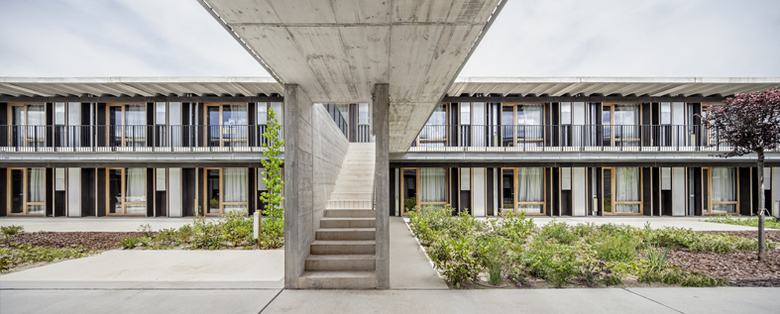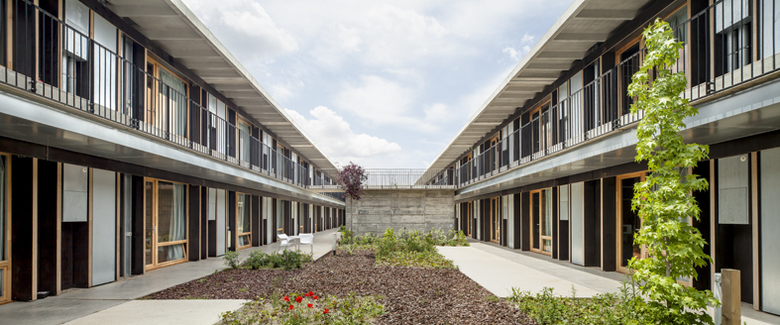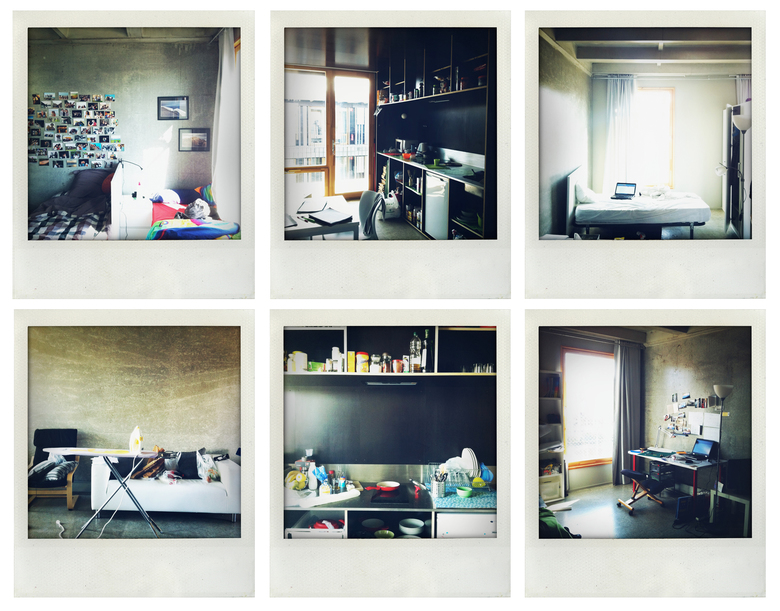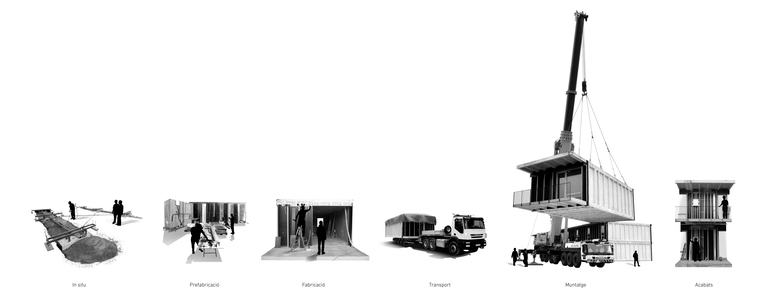ETSAV Students housing
Sant Cugat del Vallès. Barcelona, Spanje
The new university housing for students is located on the same plot as the School of Architecture of Vallès, BARCELONA TECH. The project aims to adapt to the low density of the urban surroundings, prioritizing the direct relationship between the students housing and the campus. This condition is archived with a low building, composed by a ground floor and one storey without elevators, formed by two parallel blocks separated with a central community atrium, which promotes the students relationship with nature. The residential program for architecture students ensures the possibility to intensify the coexistence between users, both individually, promoted by the interior flexibility of the housing units, and collectively, due to the potential functions of the 1000m² atrium, which is thought as a space for social events and as an intermediate bioclimatic space that allows the improvement of the energetic efficiency of the building. The project is designed based on industrialized constructions through the use of only one typology of housing made of precast concrete without partition walls. Each unit has just the necessary fixed elements, which allows for guaranteeing habitability, by simplifying finishing in order investing in energy efficiency. Most of the components are installed and assembled with dry-build systems so every module and its finishing can be dismantled and be reused or highly recyclable. The building is layered over two floors in order to take advantage of the existing topography, making accessible entrances without elevators and reducing in 50% the area used for corridors and stairs. The central atrium is covered in order to create an intermediate bioclimatic space that makes the energy efficiency of the building increase and, at the same time, economizes the building enclosure. The industrialized manufacturing of the components allows time saving and better execution control. The use of dry construction minimizes the wasted materials during the construction process. The analysis of the life cycle of this building demonstrates that this project saves up to 50% of the energy associated to construction materials and a 70 % of the energy demand in relation to standard buildings according to CTE regulations.
- Architecten
- DATAAE
- Jaar
- 2009
Gerelateerde projecten
Magazine
-
-
Building of the Week
A Loop for the Arts: The Xiao Feng Art Museum in Hangzhou
Eduard Kögel, ZAO / Zhang Ke Architecture Office | 15.12.2025 -












